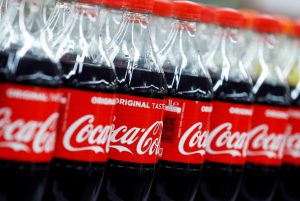Vanilla – the spice that is more expensive than gold
Do you love vanilla? You’d love vanilla in a cake, or in a coffee-based dessert. We get you and we want to share with you that vanilla is deliciously healthy. We invite you to a “vanilla” adventure, sprinkled with interesting facts about this rare spice.
Why do we call vanilla a precious spice? Vanilla is second only to saffron on the list of most expensive spices. One kilogram of vanilla is more expensive than one kilogram of silver. A kilogram of vanilla cost $20 in 2013. However, it was worth at least $600 a few years later. It is hard to believe that this spice’s price can be affected by the weather.
Basically, around 75% to 80% of vanilla worldwide is from plantations in Madagascar and the Indian Ocean. The spice is always at risk from hurricanes which is why its price is rising. Vanilla is also difficult to grow because it requires hand pollination. Vanilla is originally from Mexico. It is pollinated in Madagascar by a specific species of bee. Due to the lack of a natural pollinating element, it was necessary to create an artificial one.
You can see that the high price of vanilla is justified. It is also a guarantee of quality.
Top 10 Interesting Facts About Vanilla
Vanilla is a complicated spice that has a fascinating past. We invite you to explore the fascinating history of vanilla, which gives dishes a unique flavor.
1. Vanilla is an orchid family member, and the only edible representative of this class. It is also one of the oldest flavours known to man. It is important to go back to 1519 when the Aztec Empire was conquered and ruled by the Spanish under the mediation of Hernan Cortes, the Spanish conquistador. Vanilla was an already well-known and frequently used flavor when the Spanish expedition reached Aztec land.
2. Each vanilla bean is unique, just like grapes.
3. Vanilla flowers only bloom for 24 hours. If the pollination process fails, they wither and die. Vanilla takes a long time to mature from planting to marketing.
4. After vanilla pods have been harvested, they can be treated with warm water or heated. They are then exposed to the sun for several weeks until their original size is reduced by 20%. A high-quality pod can be used for many years after purchase.
5. Thomas Jefferson, a passionate botanist and gastronomist, was the first American to introduce this spice to the United States.

After a mission to France in 1789, Thomas Jefferson determined that vanilla was the perfect flavor for America. The United States is today the largest consumer worldwide of vanilla, and Americans love vanilla ice cream. Europe is right behind, with France being the most passionate about this spice.
6. French vanilla is called ‘Bourbon’ because it is grown in Reunion, eastern Madagascar. This is why the island is nicknamed Isle de Bourbon. This name is not derived from whiskey but rather refers to the Bourbon Dynasty that ruled France during the 17th century when Reunion Island was incorporated into French territory. This is why pods from this area are known as “Bourbon pods”. The name Bourbon is now attributed to vanilla grown on Madagascar’s territory and on other Indian Ocean islands. Bourbon vanilla, unlike vanilla plantations in Mexico where the pollination takes place by the Melipona species of bees, is human-pollinated. This contributes to its higher price. They taste the same.
7. Coca-Cola is the world’s largest vanilla buyer, and uses this flavor in its established drinks.

8. Vanilla is valued in some cultures for its healing properties. These include the calming effect on nerves and the aphrodisiac. John King, an American physician, concluded that vanilla was an aromatic stimulant and could be used in infusions to treat irritability, rheumatism, mild fevers, or mild forms thereof. Vanilla is believed to stimulate sexual function, improve brain function, and support the muscular system. Recent studies have also highlighted the soothing properties of vanilla.
9. Vanilla can help reduce the acidity in tomato-based dishes by adding a few drops. Vanilla, although it may sound strange, is a flavor that complements the flavors of meat, fish, and vegetables.
10. This scent is said to repel spiders, so vanilla-based products are used to protect them.
As you can see, the price is the main difference between the products. Let’s now understand the reasons for the cost differences between vanilla essence and extract.
Vanilla extract is made by soaking vanilla pods with a minimum age of 3-4 month in a mixture of water and ethyl Alcohol. Vanillin, a molecule found in vanilla pods, is responsible for the intense vanilla flavor. Vanillin is released more slowly if the pod has been dried for longer. The manufacturing quality standards vary from one country to the next. In the US, for example, the final product must contain at least 35% alcohol and 380g vanilla pods. It should also contain 3.8 liters water. The extract also contains less sweeteners.
Although the manufacturing process can be costly, the extract is genuine and natural with antiseptic, antibiotic, and antioxidant properties.
Vanilla essence, by contrast, is a synthetic product. It is made from petrochemicals, and imitates the scent, color, and aroma of vanilla. The essence is similar to the extract in that it gets its flavor from vanillin. However, it’s synthetic and more affordable than vanilla pods.
You will also need to decide what type of dish you wish to make before choosing between the products.
Vanilla extract is the best option if you are looking for fresh desserts, ice-creams or creams with a short preparation time. The flavor is intense and natural. Vanilla essence can be used to make homemade chocolates, doughs, or other compositions that involve baking. It is especially suitable if the vanilla flavor you choose is not too strong.
What about vanilla powder?
Vanilla sugar is often confused with vanilla powder. However, this product is made by grinding dried vanilla pods. The vanilla aroma is very distinctive. Vanilla powder is great for baking, including making pancakes, banana bread, and rice with milk.







